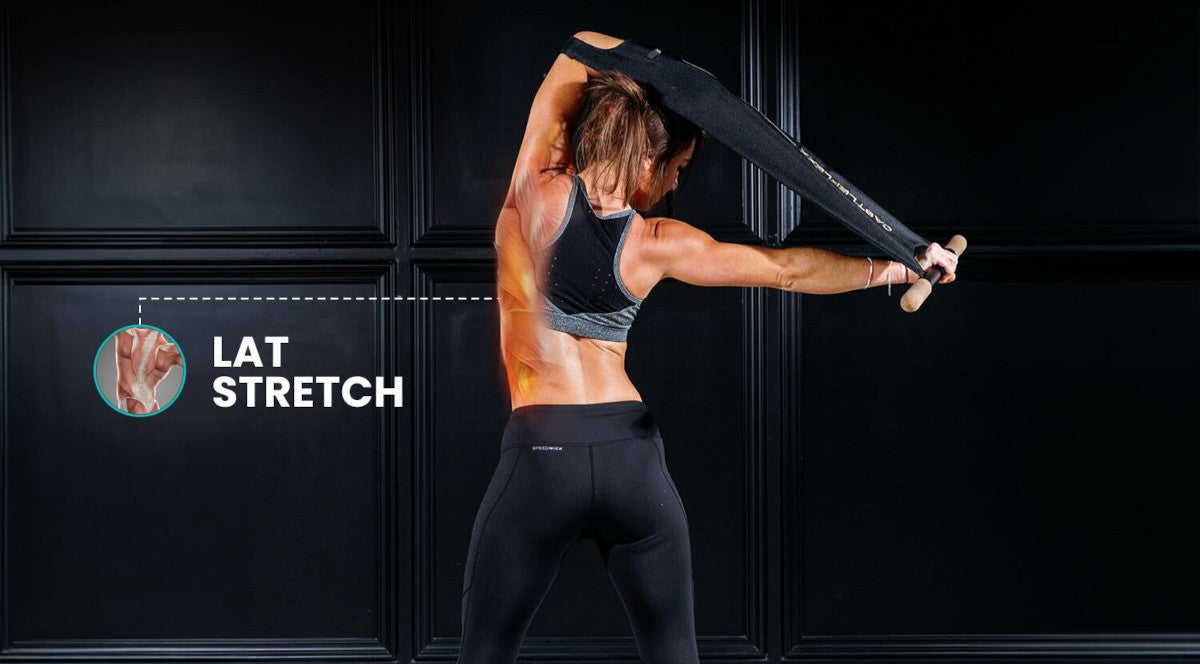Contents (Jump to a section)
How to Increase Back Flexibility: Stretches and Tips to Improve Back Flexibility Fast

When your back isn’t flexible, you can put yourself at risk for serious injuries which can often take a long time to recover from and cause much pain and frustration. Keeping your back flexible can benefit your entire body, from your toes to your neck.
Whether you're an athlete seeking to enhance performance, a fitness enthusiast aiming to perfect your yoga poses, or simply looking to end the day without an achy back, increasing back flexibility is a goal worth pursuing.
In this article, we’ll explain why it’s so important to improve back flexibility, and offer up some simple back flexibility stretches that can easily and quickly be incorporated into your daily routine.
So, if you’ve been wondering how to increase back flexibility, buckle up - you’re in the right place! Join us as we unlock the secrets to a more flexible back and embrace the profound impact it can have on our overall health and quality of life.
Understanding the Anatomy of the Back
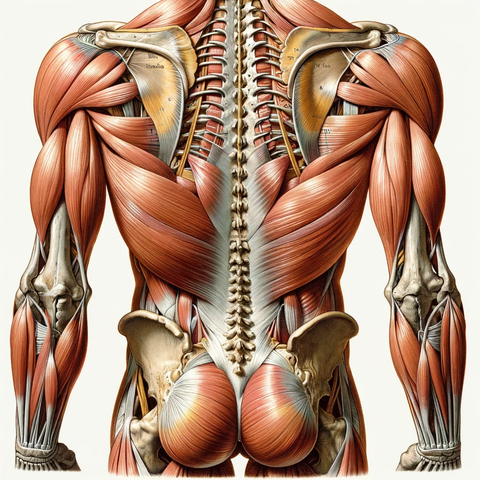
Before we dive into how to increase back flexibility, it’s essential to understand the different components of our backs and how they work together. Let’s take a look at the main muscle groups in the back, and the role these muscles play in back flexibility.
Major Muscles of the Back and Their Roles
There are lots of different muscles in the back, each playing a unique role and working together to help us lift, turn, bend, and move. Here are some of the main back muscles and the role they play:
- Erector spinae: The erector spinae is a group of muscles that runs alongside the spine and plays a significant role in maintaining proper posture. These muscles are actively engaged in activities that involve bending backward, such as arching in yoga.
- Latissimus dorsi: Also known as “lats,” the latissimus dorsi muscles are the broad, flat muscles that extend from the lower back to the upper arm. These powerful muscles are responsible for shoulder extension, adduction, and internal rotation.
- Rhomboids: Positioned between the shoulder blades, the rhomboid muscles are responsible for retracting and stabilizing the shoulder blade.
- Trapezius: The trapezius muscles are large, triangular muscles that span the neck, upper back, and shoulders. These muscles play a crucial role in shoulder movement and neck support.
How These Muscles Contribute to Flexibility
The muscles of the back work together to help us bend, twist, arch, and flex. Flexibility in the back is directly influenced by the length, elasticity, and strength of these muscles. When your back muscles are well-stretched and conditioned, they allow for an increased range of motion and fluidity in movement.
For example, tight erector spinae can restrict backward bending and limit overall back flexibility, while tight lats can hinder movements that require shoulder extension, such as reaching overhead or achieving deep backbends in yoga.
On the other hand, well-stretched and supple back muscles facilitate better posture, reduce the risk of back injuries, and enhance performance in various physical activities. As you can see, learning how to increase back flexibility can bring a lot of benefits.
Why Learn How to Increase Back Flexibility?
Back flexibility is not just a skill reserved for gymnasts and contortionists; it’s a fundamental aspect of our physical health and well-being. The ability to move your back freely brings a lot of advantages, making back flexibility stretches a valuable addition to your wellness routine.
Injury Prevention
One of the biggest reasons to prioritize your back flexibility is its role in injury prevention. A flexible back is more resilient to strain and less prone to injuries caused by overuse or sudden movements. With increased flexibility, the back muscles and ligaments can better absorb impact and stress, reducing the risk of strains, sprains, and other musculoskeletal injuries.
Improved flexibility also contributes to better posture, ensuring that your spine maintains its natural alignment and minimizing the strain on intervertebral discs and other supporting structures.
Pain Reduction
Back pain is all too common, and chronic pain in the back can make it difficult to perform even basic movements. By learning how to increase back flexibility, you can often alleviate or manage back pain more effectively. Doing stretches to increase back flexibility help relieve tension in the back muscles and promote better blood flow to your back, which can bring much-needed pain relief.
Performance Enhancement
For athletes and fitness enthusiasts alike, back flexibility can be a game-changer. By enhancing back flexibility, athletes can achieve better body control, improved range of motion, and increased agility.
Whether it's achieving deeper yoga poses, executing powerful golf swings, or excelling in dance routines, a flexible back can elevate performance levels and unlock new possibilities across a wide range of sports and activities.
Improved Quality of Life
As your back flexibility increases, so does your freedom of movement, leading to a greater sense of independence and confidence in your physical abilities. Simple tasks, such as bending to tie shoelaces or reaching for objects on high shelves, become easier and less taxing. Plus, a flexible back can foster better body awareness and mindfulness, enhancing your well-being and reducing stress levels.
Factors Influencing Back Flexibility
There are a few different things that can affect how flexible your back is. Let’s take a look at the main factors that affect back flexibility.
Age and Flexibility
As we age, our bodies undergo many changes that can affect back flexibility. The spine tends to lose some of its natural curvature and elasticity over time, leading to a gradual decline in flexibility. At the same time, the discs between the vertebrae may undergo degeneration, reducing their ability to absorb shock and limiting the range of motion in the back.
While age-related changes may be inevitable, maintaining an active lifestyle and learning how to increase back flexibility with back flexibility stretches can help slow down the decline and preserve your back’s flexibility.
Physical Activity and Sedentary Lifestyle
Physical activity, or the lack thereof, also impacts back flexibility. Regular exercise, especially activities that involve stretching and strengthening your back muscles, can contribute to improved flexibility. On the other hand, a sedentary lifestyle can lead to muscle tightness and decreased flexibility.
People who spend long hours sitting at desks or doing activities that promote poor posture are at a higher risk of developing tightness in the back muscles, which can ultimately restrict flexibility. Learning how to increase back flexibility and being mindful of your posture throughout the day can help counteract the negative effects of sedentary behavior.
Impact of Posture and Ergonomics
Maintaining proper posture and good ergonomic principles during daily activities can greatly influence your back flexibility. Poor posture, such as slouching or hunching over, can lead to the shortening of back muscles and increased tension in the spine, reducing your flexibility over time.
Ergonomics also plays a vital role in back health and flexibility. Ensuring that workstations, chairs, and other equipment are properly adjusted can reduce strain on your back and promote a more comfortable and flexible posture. Employing ergonomic practices at both work and home can significantly contribute to maintaining or improving back flexibility.
What are the Best Back Flexibility Stretches?
Cat-Cow Stretch

The cat-cow stretch is an excellent warm-up exercise that targets the entire spine. Starting on all fours, alternate between arching your back upward (the "cat" position) and dropping it into a gentle arch (the "cow" position). This stretch helps increase mobility and flexibility in the spine while promoting relaxation and relieving tension in the back muscles.
Cobra Pose Stretch
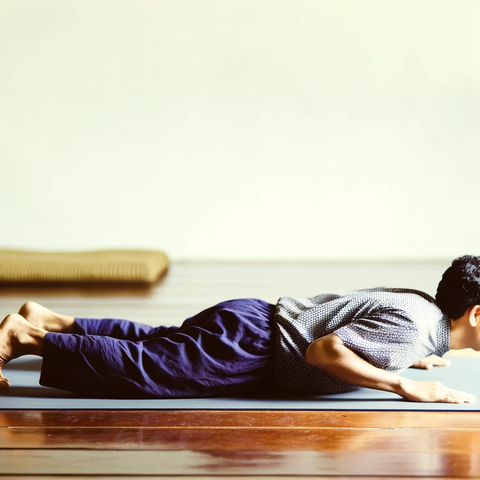
The cobra pose is a classic yoga pose that targets the muscles in the lower back. Lie on your stomach, place your palms near your shoulders, and gently lift your chest off the floor while keeping your pelvis grounded. Cobra pose helps stretch the front of the body, while strengthening and increasing flexibility in the back.
Child's Pose Stretch

Child's pose is a restorative stretch that elongates the spine and stretches the lower back. Start on all fours and sit back on your heels while reaching your arms forward. This gentle stretch is perfect for relaxation and relieving tension in the back.
Lat Stretch

A basic lat stretch can improve posture and range of motion, and reduces tension in your upper back and shoulders. Stand up straight, loop your elbow inside the CastleFlexx, raise your arm above your head with your elbow bent, and hold the CastleFlexx handle in your other hand. Gently extend this arm until your elbow is straight, keeping your other arm raised above your head.
Seated Forward Bend
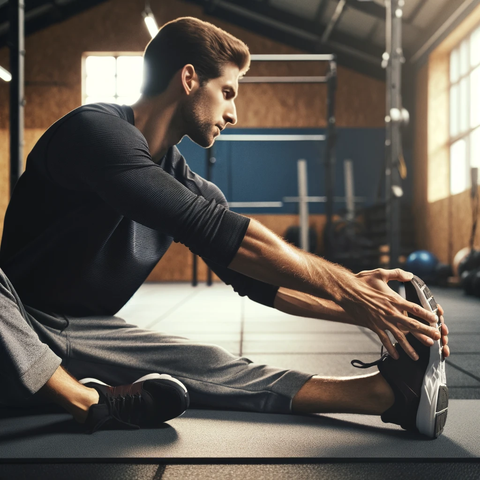
And finally, we have the seated forward bend. Sit with your legs extended in front of you and hinge at the hips to reach forward toward your toes. This stretch targets the hamstrings and lower back, promoting flexibility in the entire posterior chain. This stretch can also be performed with a towel or resistance bands - simply loop the band around your feet and pull back gently. Alternatively, using the CastleFlexx delivers a more effective, targeted stretch compared to using resistance bands or towels.
Toe Touch Stretch
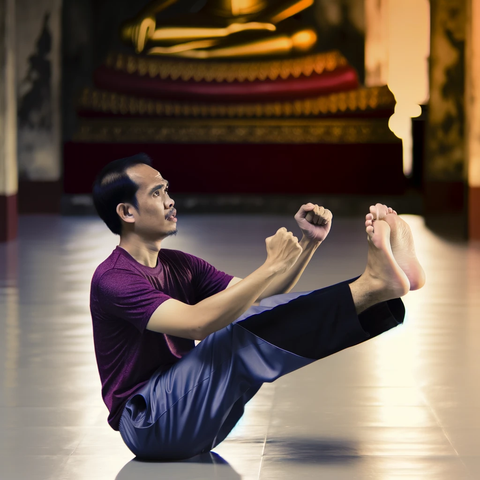
Stand with feet together, shoulders relaxed. Keep feet parallel, knees slightly bent. Lean forward, hinging at the hips, maintaining a straight back. Extend arms toward toes, allowing the head to hang. Maintain for 15-30 seconds, focusing on the stretch along the back of the legs. Rise slowly, engaging core muscles.Repeat as Needed. Perform gently, avoiding bouncing. Use as part of warm-up or cool-down.
Supine Spine Twist

Lie on a mat, facing the ceiling. Extend your arms directly to the sides for added stability. Bring your knees up, forming a right angle with your legs. Gradually lower both legs to one side, ensuring your back remains flat on the ground, and keep your head facing upwards. Allow your legs to relax to the side before slowly lifting them back to the middle. Repeat the movement on the other side for a comprehensive stretch.
Kneeling Thoracic Twists
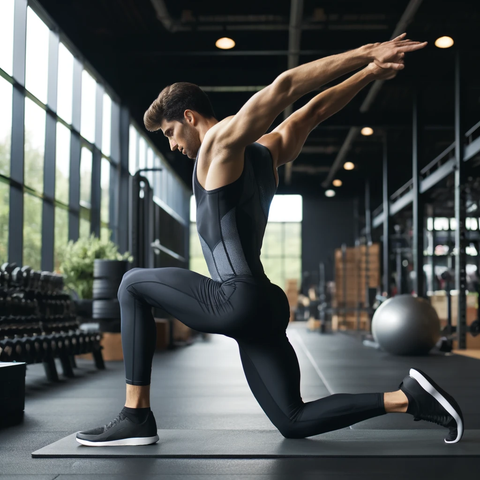
Begin by kneeling on one knee. Place both palms flat on the ground, aligning them with your front foot. Rotate your torso, elevating your arm up and over the front leg. Twist until your shoulder, elbow, and hand align, pointing towards the ceiling. Maintain a neutral neck and head position throughout the movement, following the natural rotation of the torso. Gradually return to the starting position. Repeat this back mobility exercise on both sides.
Jefferson Curl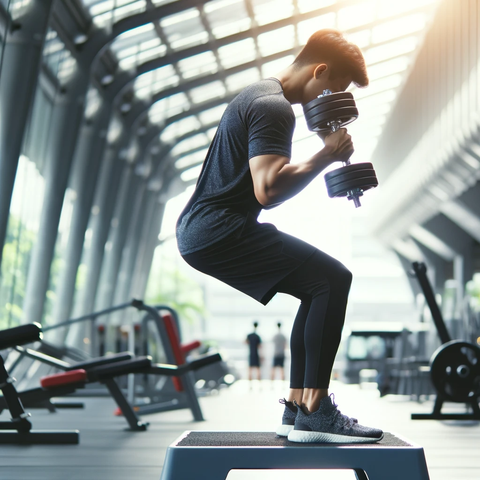
Bend your knees and maintain a straight back while picking up the weight. Stand with your feet shoulder-width apart, holding the weight with both hands. Relax your arms and slowly curl your back forward, aiming to touch your toes. Keep your legs and arms straight throughout the entire stretch. Relax at the bottom of the movement, exhale, and embrace the stretch. Hold for a few seconds before gradually returning to the starting position. Repeat the Jefferson Curl for a comprehensive stretch.
How to Increase Back Flexibility: Tips for Fast Results
Learning how to increase back flexibility is a journey that requires dedication, consistency, and a strategic approach to stretching and training. Let’s take a look at some back flexibility stretches and what to keep in mind when you’re doing stretches for back flexibility.
Basic Principles of Stretching to Improve Back Flexibility
Before we dive into some specific stretches to increase back flexibility, it’s important to understand the basics of back flexibility stretches. Always begin your stretching routine with a gentle warm-up to increase blood flow and prepare the muscles for deeper stretches.
Hold each stretch for at least 15-30 seconds and focus on maintaining a steady, controlled breath throughout. Avoid bouncing or jerking movements, as this can lead to injury.
Progressive Overload in Flexibility Training
Similar to strength training, progressive overload is essential in flexibility training. As your back flexibility improves, gradually deepen your back flexibility stretches or incorporate more challenging variations to continue making progress. Remember to listen to your body and avoid pushing yourself too hard, as overstretching can lead to injury.
The Role of Consistency and Routine in Improving Flexibility
Consistency is key to improving back flexibility. Aim to stretch regularly, ideally incorporating stretches for back flexibility into your daily routine. Even short, focused stretching sessions can yield significant benefits over time. Create a flexibility routine that targets different areas of your back and incorporates stretches for various muscle groups.
Performing Back Flexibility Stretches With Castleflexx
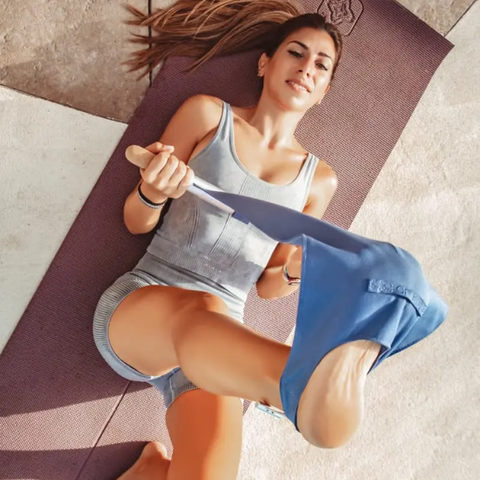
While some stretches for back flexibility can be performed on your own, your stretches are much more effective if you use dedicated flexibility equipment like the CastleFlexx.
The CastleFlexx is a patented stretching device, previously only available to elite athletes. This device brings the many assisted stretching benefits to your living room, without the need for expensive visits to a physical therapist.
The CastleFlexx is among the best stretching equipment to improve back flexibility because it’s designed for both upper and lower-body stretching, applying a holistic approach to stretching your back muscles.
Not only can you use the CastleFlexx for fascial stretch therapy at home, but you can take advantage of its lightweight, portable design for stretching on the go, making it easy to stick to your new stretching routine.
The CastleFlexx isn’t just designed to improve back flexibility. You can use the CastleFlexx for ankle mobility exercises, to release tight calves and knee pain, to find relief from tight glutes and back pain, to speed up your Achilles recovery time, and also perform stretches for shin splints to reduce your shin splint recovery time.
You can even use the CastleFlexx to learn how to release tight calves, how to fix tight hamstrings, how to stretch glutes and hamstrings, and how to get better hip mobility. If you’re wondering how to increase flexibility in your back and target other key muscle groups at the same time, the CastleFlexx is exactly what you need.
Nutrition for Flexibility
A balanced diet plays a role in supporting flexibility training. Make sure you're consuming enough nutrients, including vitamins C and D, calcium, and magnesium, which contribute to muscle and joint health. Proper nutrition helps optimize muscle recovery and repair, making your stretches to increase back flexibility even more effective.
Importance of Hydration
Staying hydrated is essential for overall health and plays a role in how to get a more flexible back. Proper hydration helps keep muscles and connective tissues supple, making it easier to perform stretches and reducing the risk of muscle cramps and strains.
Role of Sleep in Muscle Recovery
Good sleep is crucial for muscle recovery and your overall physical and mental health. During sleep, the body repairs and strengthens muscles, which is essential for improving your flexibility. Aim for 7-9 hours of quality sleep per night to support your flexibility training efforts.
Sleep is also important for the repair and recovery of other muscle groups. If you’re wondering why is my hamstring so tight two days after exercise, or how long to heal plantar fasciitis that never seems to go away, start by making sure you’re getting enough quality sleep each night.
Final Thoughts on How to Increase Back Flexibility With Stretches and Castleflexx
Hopefully, we’ve shown you how to increase flexibility in your back by developing a consistent stretching routine, eating well, staying hydrated, and giving your muscles plenty of time to recover.
A flexible back isn’t just important for yoga poses, it’s essential for your core strength, your posture, and keeping your back muscles strong and healthy. It also significantly reduces your risk of a serious back injury, which could keep you sidelined for long periods and make even basic movements excruciatingly painful.
If you’re wondering how to get a more flexible back the fast way, the CastleFlexx can help supercharge your stretching routine.
Its unique design targets specific muscle groups to make your stretches even more effective, strengthening your back muscles and leaving you feeling great. How long does it take to become flexible in the back? With the CastleFlexx, your back will become more flexible after every stretching session.
Our modern, busy, office-centric lifestyles put a lot of additional stress and strain on our backs. Give your essential back muscles the best care possible by stretching with the CastleFlexx.
